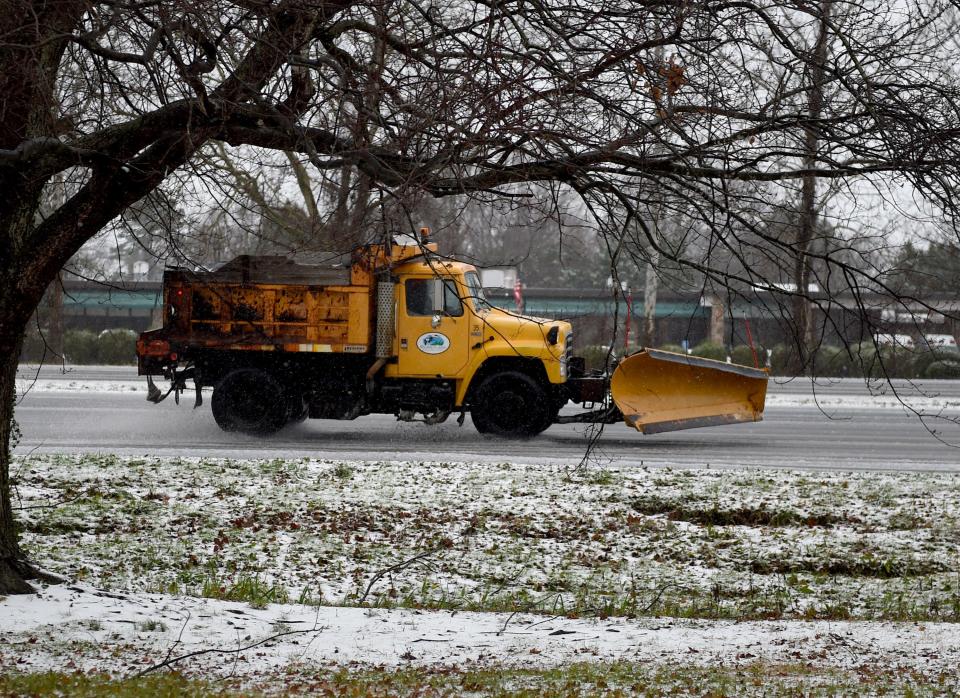What El Niño and La Niña ocean patterns mean for hurricane season and tornadoes
For residents of the Delmarva Peninsula, issues of ocean cooling or warming may not be a usual concern, but its impact on weather patterns and hurricane seasons keeps scientists busy with research.
Natural oceanic occurrences like El Niño and La Niña represent drastic changes that impact everything from fishing to weather. During El Niño, trade winds weaken and warm water is pushed back east, toward the west coast of the Americas. The result, according to the National Weather service, often brings much below normal temperatures to the mid-Atlantic states, along with increased probability for snow in winter.
Conversely, La Niña is when trade winds are even stronger than usual, pushing more warm water toward Asia. Seasonal snowfall totals for much of the Mid-Atlantic, southern and central Appalachians and the northeast coast is significantly lower during these events.

This week, Tropical Storm Idalia is projected to make landfall along the western coast of Florida and then moving northeast across the state and the southeastern part of Georgia. It is forecast to become a major hurricane before it reaches the Gulf Coast of Florida, according to the latest advisory from the National Hurricane Center.
The hurricane center said Idalia is expected to bring flash flooding to areas across the west coast of Florida, the Florida Panhandle and southern Georgia Tuesday into Wednesday. Get all the latest on Idalia here.
The Climate Prediction Center for the National Weather Service notes El Niño is anticipated to continue through the Northern Hemisphere winter with greater than 95% chance from December 2023 through February 2024.
More salt water resistant crops Farmers battle climate change, sea level rise with new assist from UMES research
Stronger hurricanes for the Mid-Atlantic?

"El Niño can also have a positive influence on weather to North America like suppressing Atlantic hurricane formations. During an El Niño year the intensity of Atlantic hurricanes was found to be weaker than during a neutral year or a La Niña year," said Meng Xia, PH.D., a professor in the Department of Natural Sciences at University of Maryland Eastern Shore. "There were also significant differences found in hurricane intensity between El Niño and La Niña years,"
Episodes of El Niño and La Niña typically last nine to 12 months but can sometimes last for years.
According to Xia, the incidence of hurricanes is higher during the neutral phase, or when neither El Niño nor La Niña are in effect, than during El Niño. Although hurricanes occur more often during La Niña episodes, significant tropical weather events have occurred during the neutral phase.
"For example, the record shattering 2005 hurricane season that included Katrina and Rita occurred during the neutral phase. Hurricane Andrew, the most destructive United States hurricane of record, made landfall along the Gulf coast during a neutral phase of the El Niño/Southern Oscillation in 1992," Xia said.
Impact of El Niño and La Niña events on tornadoes
Xia noted the connections between El Niño and La Niña events and tornado development over the Deep South are not entirely clear. However, preliminary research indicates a relationship between the shift among the two and the occurrence of strong to violent tornado outbreaks over the Southeast United States.
In the case of F2 and greater tornadoes, more appear to occur during La Niña months.
More on Eastern Shore flooding Will Crisfield be ready for next big storm? City seeks federal funds to prevent flooding
The National Oceanic and Atmospheric Administration has also argued elements of much contested climate change impacts have not made conditions any better in terms of inclement and severe weather events.
"Simulations conducted for the Coupled Model Inter-comparison Project found a near doubling in the frequency of future extreme La Niña events, from one in every 23 years to one in every 13 years," Xia said. "Approximately 75% of the increase occurs in years following extreme El Niño events, thus projecting more frequent swings between opposite extremes from one year to the next."
A reasonable 2023 hurricane outlook?

In May, NOAA’s outlook for the 2023 Atlantic hurricane season, which goes from June 1 to November 30, predicted a 40% chance of a near-normal season, a 30% chance of an above-normal season and a 30% chance of a below-normal season.
It forecasted a range of 12 to 17 total named storms with winds of 39 mph or higher.
"Of those, 5 to 9 could become hurricanes (winds of 74 mph or higher), including 1 to 4 major hurricanes with category 3, 4 or 5; with winds of 111 mph or higher. NOAA has a 70% confidence in these ranges. The upcoming Atlantic hurricane season is expected to be less active than recent years, due to competing factors — some that suppress storm development and some that fuel it — driving this year's overall forecast for a near-normal season," the report said.
The agency added NOAA’s outlook is for overall seasonal activity and is not a landfall forecast.
This summer, NOAA will implement a series of upgrades and improvements. NOAA will expand the capacity of its operational supercomputing system by 20%. This increase in computing capability will enable NOAA to improve and run more complex forecast models, including significant model upgrades this hurricane season.
More on past hurricane activity This Chesapeake Bay island changed course after hurricane devastation. What it can teach others
This article originally appeared on Salisbury Daily Times: What El Niño and La Niña ocean patterns mean for hurricane season

